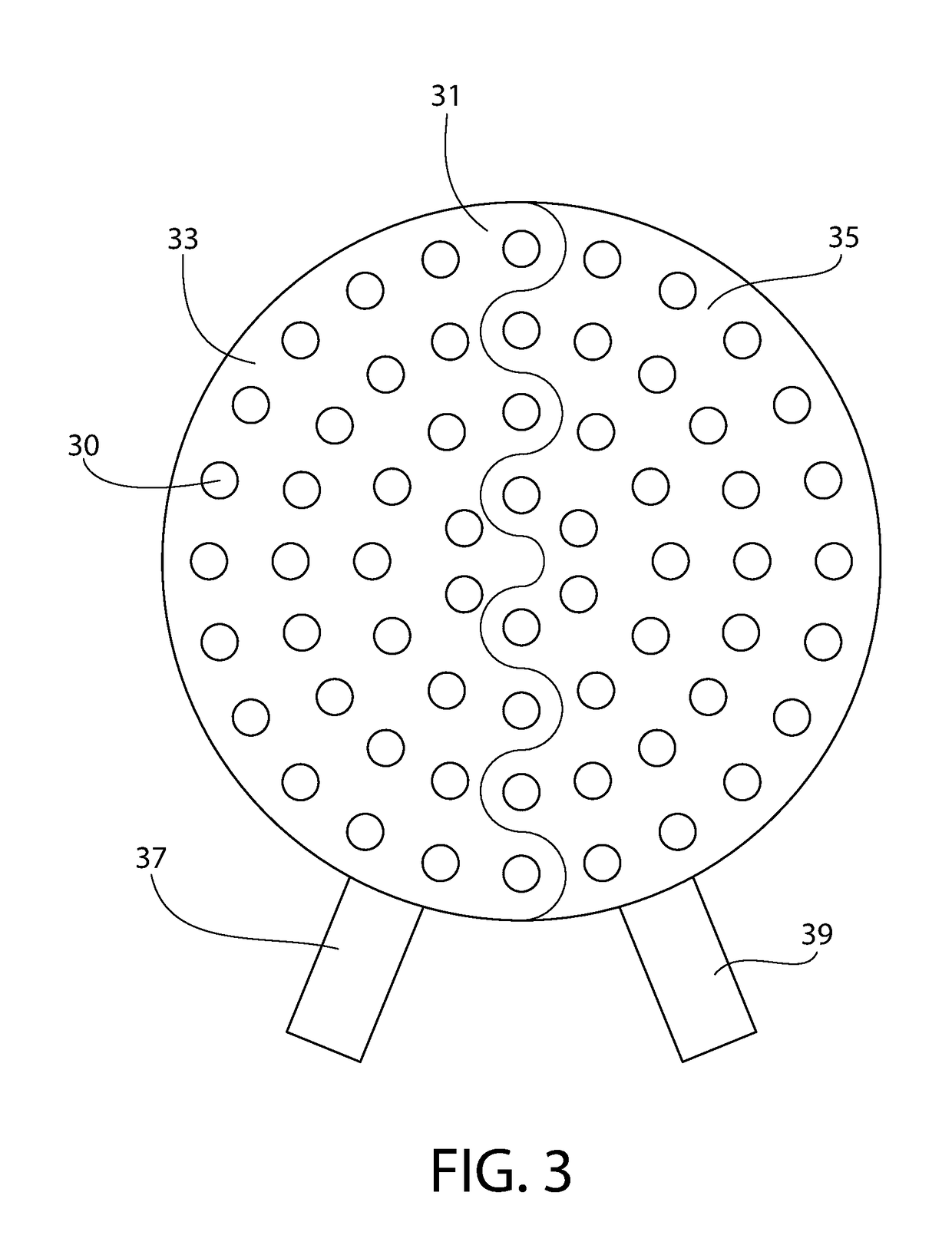Film electrode for electrostatic chuck
- Summary
- Abstract
- Description
- Claims
- Application Information
AI Technical Summary
Benefits of technology
Problems solved by technology
Method used
Image
Examples
example 1
Fabrication of E-Chuck Having Perforated Multilayer Electrode
[0044]An E-chuck Si / SIC substrate measuring 350 mm in diameter and 6 mm thick is first fabricated. It is produced by a reaction bonding process that is known in the art. The Si / SiC substrate is then ground and machined to high flatness. Next, the pins are produced by machining or eroding the very flat wafer supporting surface in regions that are not pins; that is, regions between pins. The eroding may be performed by electric discharge machining (EDM). The pin diameter is 1000 micrometer and the pin height is 140 micrometer. Pin spacing is 5 mm and pins are in a triangular pattern. The pin-height is selected to accommodate the layer stack to be bonded on subsequently. Then, the pinned substrate is lapped. This pinned substrate provides high flatness (nm scale on die site), high thermal conductivity, flow-through cooling, and a matching CTE with the Si wafer.
Building the Multilayer Film Electrode
[0045]Construction begins by...
example 2
[0065]This Example demonstrates the application of the insulator layer such that the height or distance between the pin tops and the upper surface of the insulation layer is carefully controlled. It is made with reference to FIGS. 7A through 7G.
[0066]First, a quartz tool is fabricated. The tool is 300 mm in diameter and is lapped so that the contact or working surface (face) of the tool is optically flat (for example, 1 / 10 wavelength, or about 63 nm). This flat surface is then coated with chromium 71. A layer of photoresist is then applied on top of the chromium layer. A pattern of dots (or the reverse) is then projected onto the photoresist layer, with the pattern corresponding to the locations of pins on the e-chuck substrate. The unexposed photoresist can then be dissolved away, leaving exposed chromium. The exposed chromium in turn can be stripped away using an etchant, thereby exposing a circular area 73 of quartz 75. These exposed regions of quartz can then be etched using hyd...
example 3
[0076]A chrome-on-glass dot array is patterned onto the back side of an optically flat surface of each of two quartz plates using standard photolithography, leaving oversized (with respect to pin diameter) opaque dots that correspond to the pin locations.
[0077]SU-8 photoresist is spun coat to a thickness of 10 μm on the optically flat surface of one of the quartz plates, and spun coat to a thickness of 5 μm on the optically flat surface of the other quartz plate. The photoresist is then selectively exposed to radiation coining through the back side of the quartz plate so the dots are transferred to the resist, and developed, leaving SU-8 everywhere except for the areas where the pins will touch during molding. Thus, two master tools are created.
[0078]NORLAND 63 optical adhesive 81 (Norland Products, Inc., Cranbury, N.J.) is applied to the SiC chuck substrate 41 between the pins 43, and the 10 μm thick SU-8 / glass master is used similar to its use in Example 2 to cast and UV cure the ...
PUM
| Property | Measurement | Unit |
|---|---|---|
| Length | aaaaa | aaaaa |
| Length | aaaaa | aaaaa |
| Length | aaaaa | aaaaa |
Abstract
Description
Claims
Application Information
 Login to View More
Login to View More - R&D
- Intellectual Property
- Life Sciences
- Materials
- Tech Scout
- Unparalleled Data Quality
- Higher Quality Content
- 60% Fewer Hallucinations
Browse by: Latest US Patents, China's latest patents, Technical Efficacy Thesaurus, Application Domain, Technology Topic, Popular Technical Reports.
© 2025 PatSnap. All rights reserved.Legal|Privacy policy|Modern Slavery Act Transparency Statement|Sitemap|About US| Contact US: help@patsnap.com



